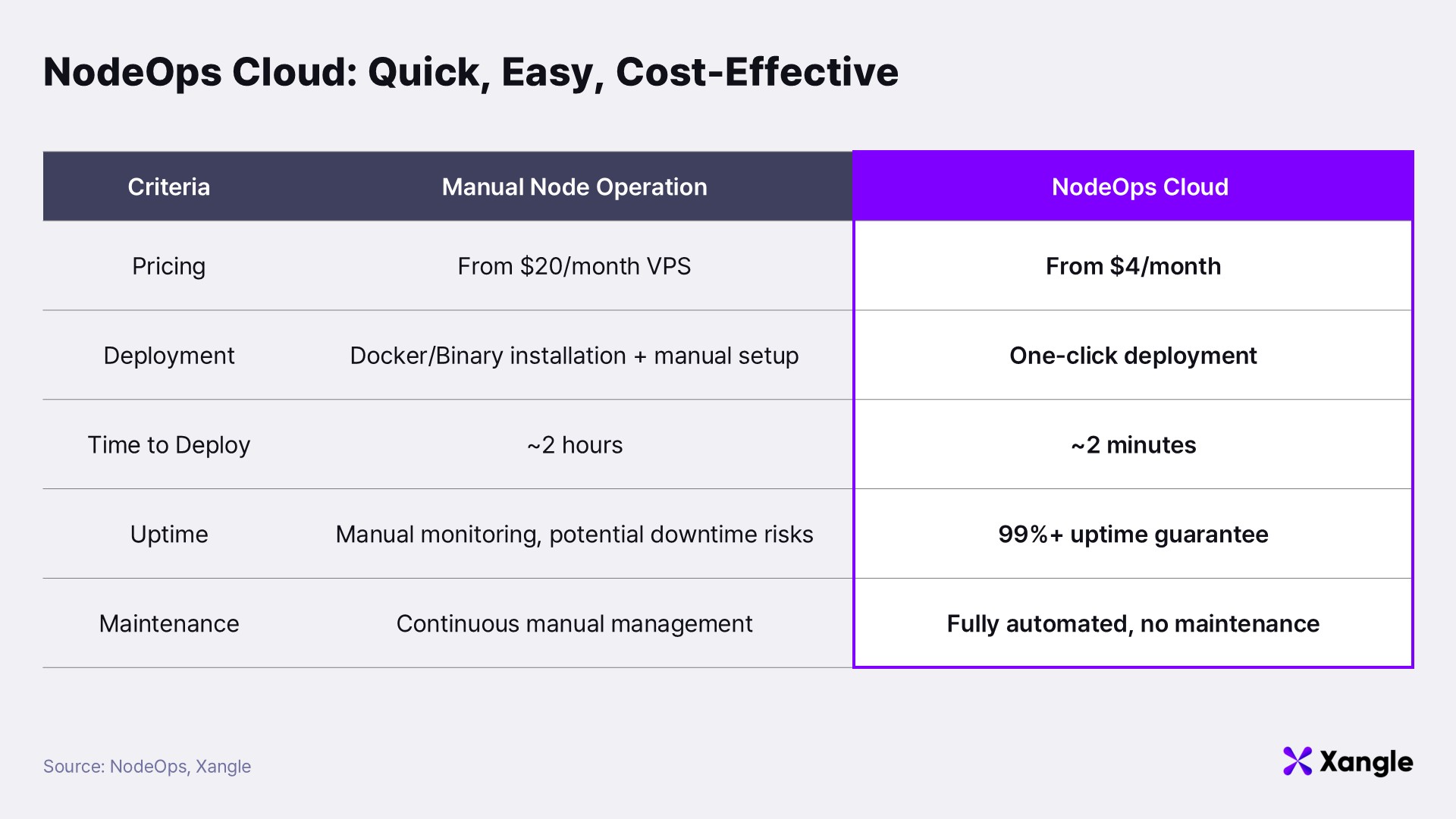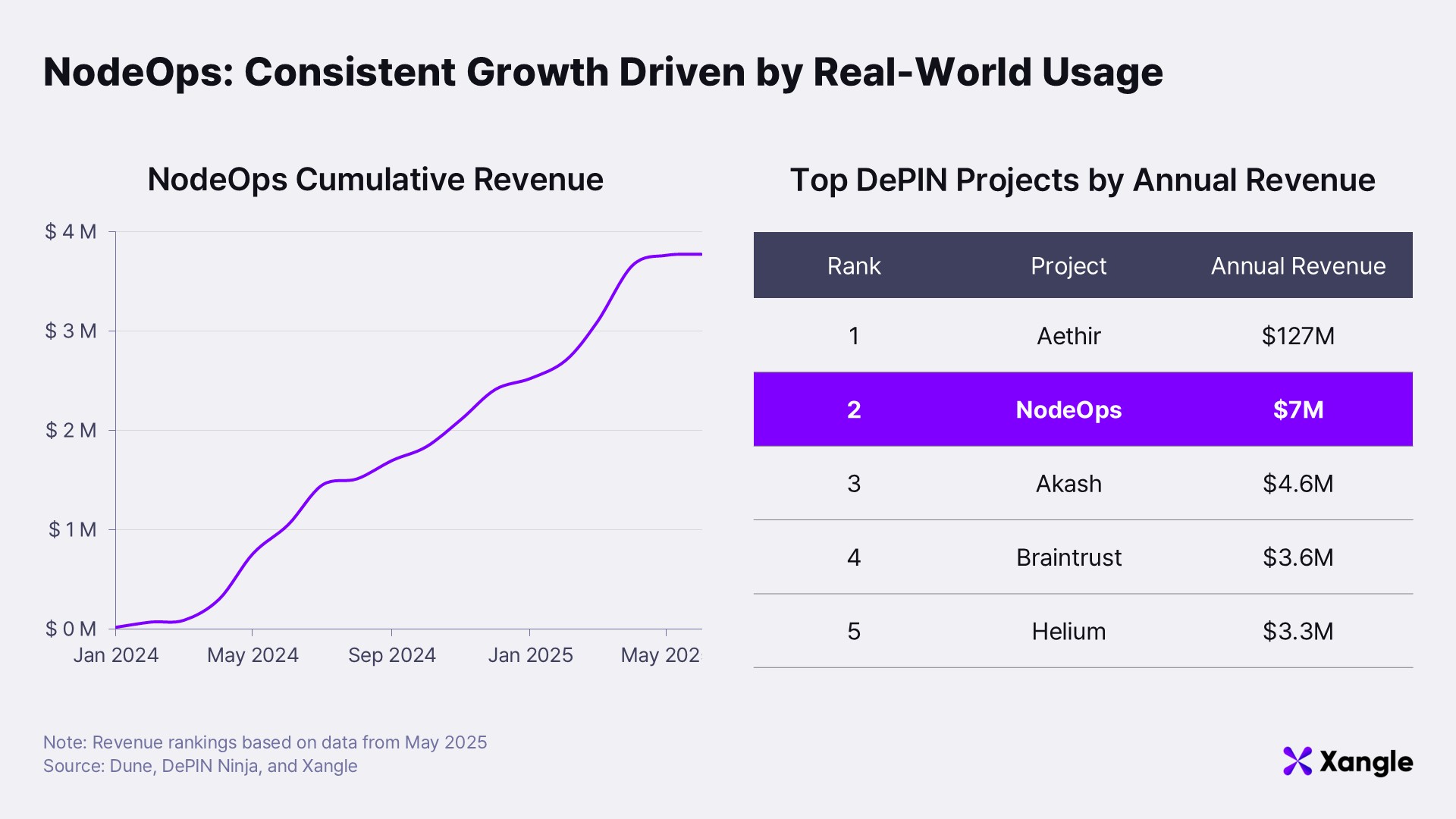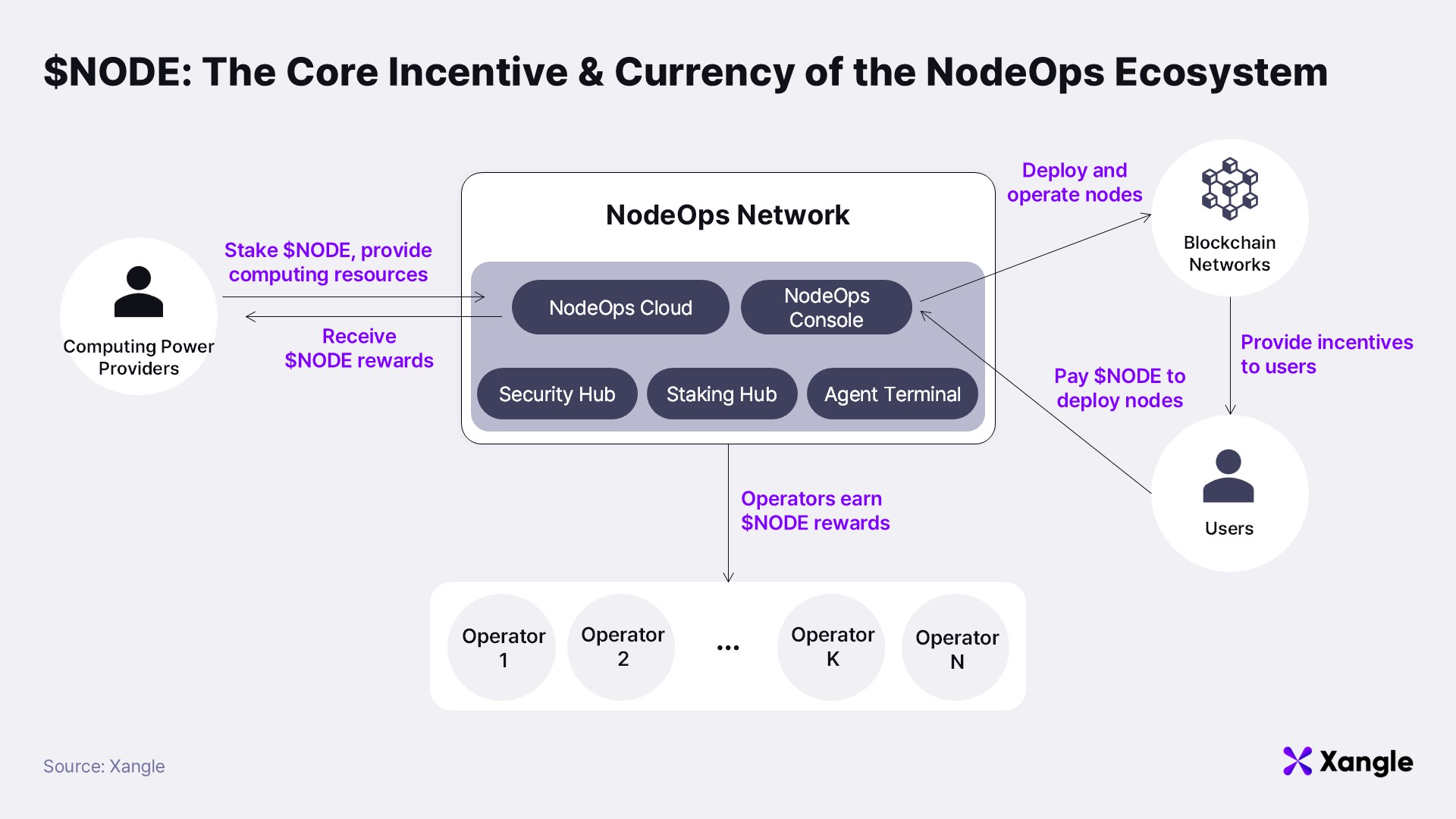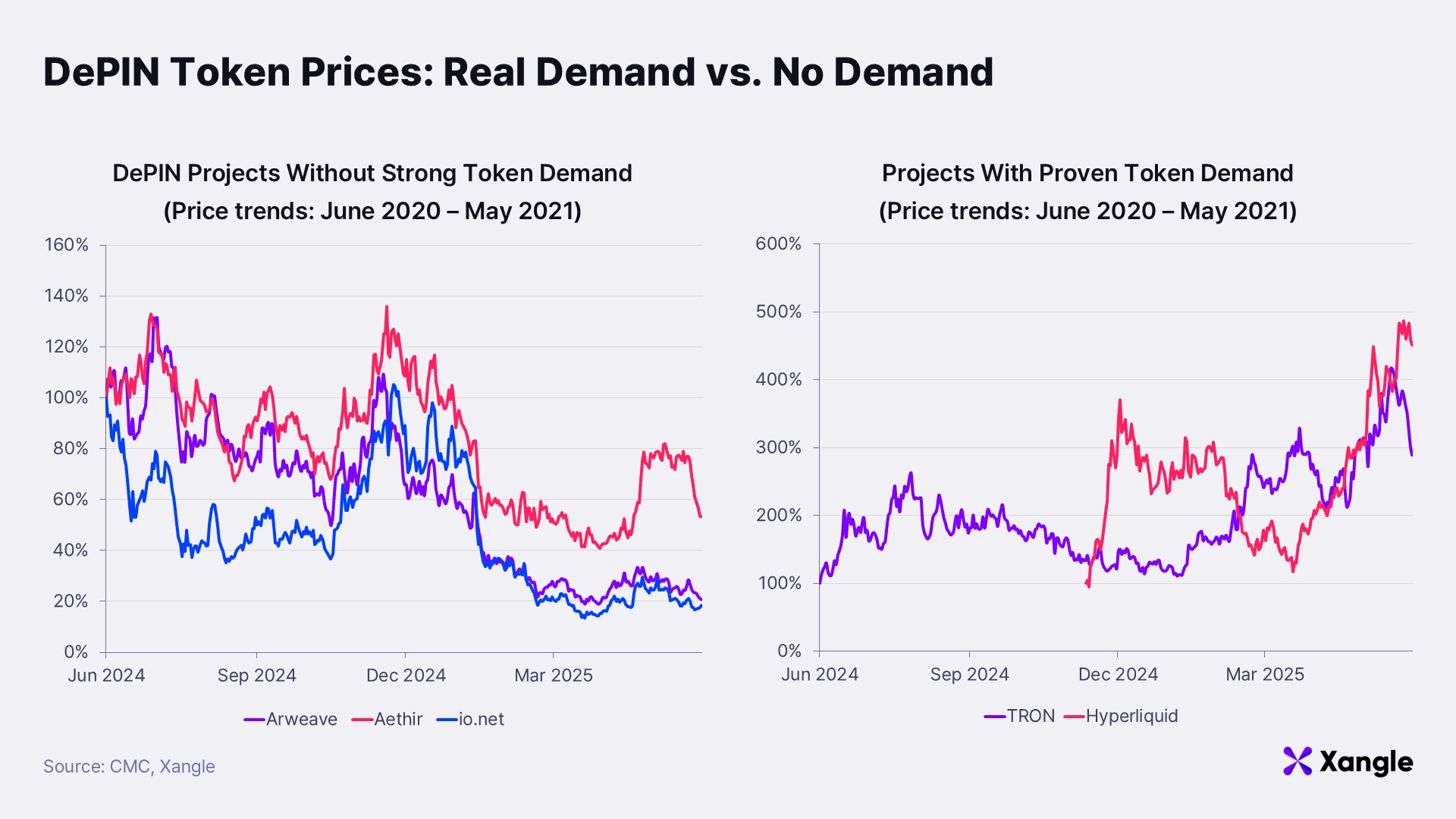

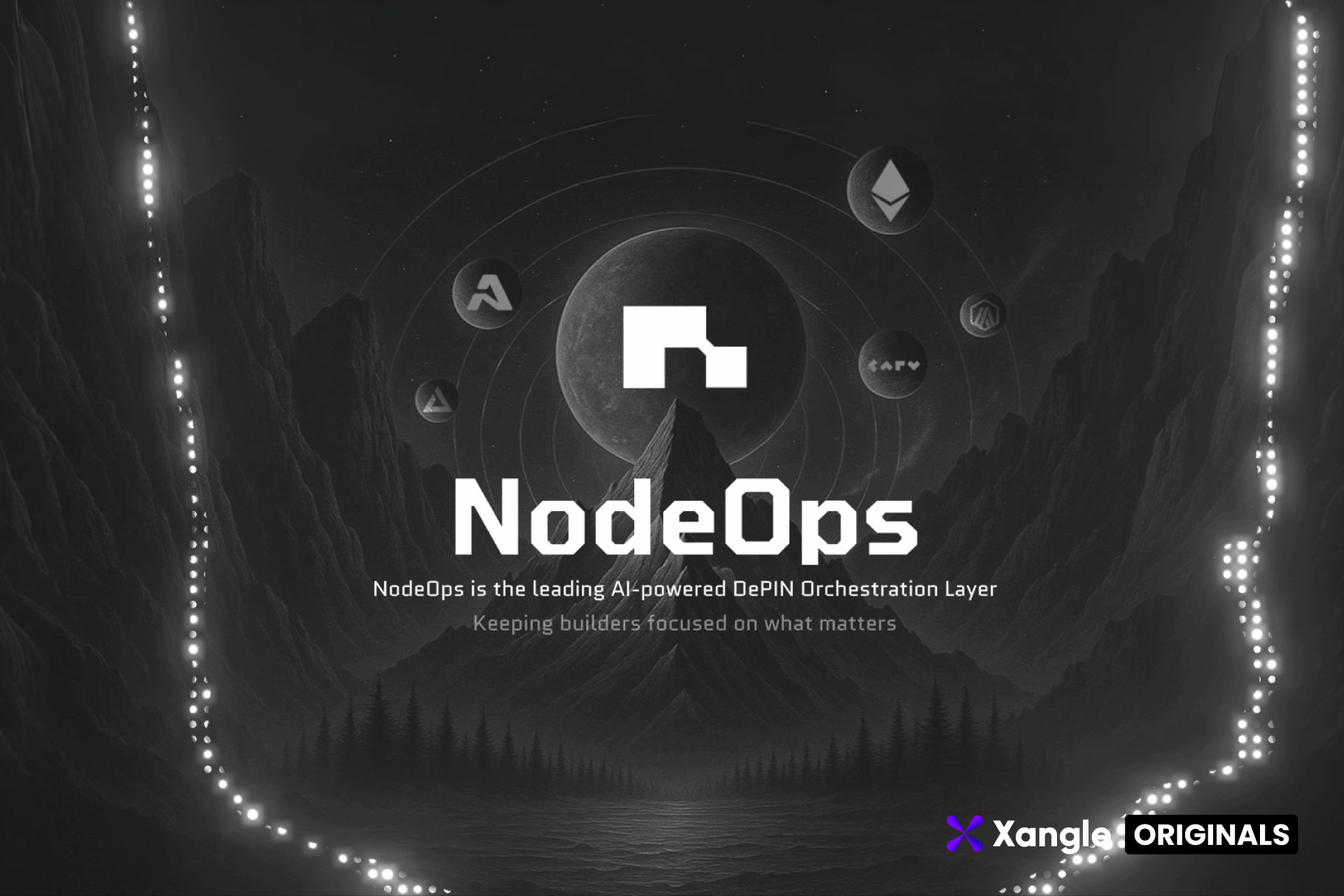
Table of Contents
1. Introduction
2. How NodeOps Implements DePIN
2-1. The NodeOps Network: The foundation of the ecosystem
2-2. NodeOps Cloud: Enabling anyone to provide and utilize computing power
2-3. NodeOps Console: Significantly lowering the barriers to blockchain network participation
2-4. Orchestrating the entire infrastructure ecosystem
3. Creating Value Through Real-World Usage
4. $NODE Tokenomics: Incentive Engine and Currency for the Ecosystem
5. Closing Remarks – NodeOps Is Bringing DePIN to the Masses
1. Introduction
“Blockchain networks are decentralized systems designed to transparently and securely manage data without central authorities, enabling participants to engage directly in network operations and decision-making.”
This sentence will be familiar to anyone with even a slight interest in blockchain technology. Yet, can truly anyoneparticipate? As you read this, could you realistically contribute to network security or join in governance activities right away?
From my perspective, the answer is clearly “no.” Of course, in Proof of Stake (PoS)-based networks, indirect participation is possible through token delegation. However, delegation alone doesn’t equate to genuine network involvement. True participation implies directly running a node and actively functioning as part of the network. Unfortunately, due to my lack of coding skills, crossing this technical threshold remains impossible.
I highlight the barriers to blockchain network participation and my own technical limitations upfront precisely because a project exists to address these very challenges. That project is NodeOps. Initially launched as a Node-as-a-Service (NaaS) platform designed to simplify blockchain node management, NodeOps has since evolved beyond its original scope, expanding into a decentralized physical infrastructure network (DePIN) for general-purpose computing.
In this report, we'll carefully explore how NodeOps tackles these challenges, along with the philosophy and vision guiding its continued growth and development.
2. How NodeOps Implements DePIN
NodeOps was founded in June 2023 with the objective of reducing the complexity of blockchain infrastructure and eliminating technical barriers impeding Web3 adoption. Initially, the team introduced a Node-as-a-Service (NaaS) platform featuring a no-code interface, enabling users to easily deploy nodes across various blockchain networks with just a few clicks.
However, NodeOps' vision extended far beyond merely simplifying node operations. The platform soon evolved into a foundational layer for decentralized physical infrastructure networks (DePIN), aiming to serve not just blockchain networks but also the broader general-purpose computing market. Currently, the NodeOps ecosystem comprises three core components: NodeOps Network, the NodeOps Platform, and the $NODE token.
NodeOps Network is a decentralized infrastructure coordination layer powering the next era of verifiable compute. It connects 89,000+ machines and 24,000 providers across 60+ blockchain ecosystems, serving over 700,000 verified users. The underlying protocol enables permissionless orchestration of general-purpose compute, enforced by AVS-integrated slashing and coordinated by the $NODE token.
Built on top of this network, the NodeOps Platform offers a modular product suite including a no code Node Console, decentralized Compute Cloud, Staking Hub, Security Hub, and AI Agent Terminal designed to simplify infrastructure deployment across Web3 and AI. NodeOps currently manages $150M+ in assets and has generated $3.8M+ in revenue, reflecting strong product market fit and growing enterprise adoption.
At the core is $NODE, the utility and coordination token of the NodeOps Network. Users burn $NODE to access services through platform credits, while providers stake it to register, earn rewards, and participate in governance. Its emissions follow a dynamic mint-and-burn model tied to real network usage, anchoring long-term value in platform demand.
Backed by this clear vision and effective execution, NodeOps secured a $5 million seed round in May 2024. The investment round was led by L1D, with participation from Bitscale Capital, Blockchain Founders Fund, Finality Capital, and Polygon co-founders Sandeep Nailwal and Jaynti Kanani.
Let's delve deeper into exactly how NodeOps is implementing its DePIN vision.
2-1. The NodeOps Network: The foundation of the ecosystem
The NodeOps Network serves as the foundational blockchain network underpinning the entire NodeOps ecosystem. To ensure robust security, it utilizes a restaking protocol, which leverages already-staked assets from existing blockchain networks.
Specifically, NodeOps integrates with platforms like Babylon, EigenLayer, and Solayer, harnessing assets already staked on major Layer 1 blockchains such as Ethereum, Bitcoin, and Solana for NodeOps Network security. For instance, EigenLayer allows ETH stakers to designate EigenLayer-managed addresses for unstaking, effectively enabling their staked ETH to also serve as collateral for securing other protocols. Participants known as Restaking Operators function as validators within this framework, overseeing and verifying the accuracy of computations and incentive distributions on the NodeOps Network. Any manipulation or incorrect submission results in slashing of the staked assets, ensuring high levels of trust and security.
The NodeOps Network ecosystem comprises several key participants (Compute Providers and Node Operators are connected to NodeOps Cloud and Console respectively, which are discussed in sections 2-2 and 2-3):
Compute Provider
Compute Providers contribute computing resources to the network by connecting their servers. Participants stake a predetermined amount of $NODE tokens and register hardware that meets minimum specifications (e.g., CPU, RAM, SSD, network connectivity). These resources are then utilized for various workloads on NodeOps Cloud and Console, and providers receive rewards based on actual resource usage and uptime.
Node Operator
Node Operators deploy and manage blockchain protocol nodes, AI computations, and other workloads via the Console or Marketplace. Participation is open to everyone, from casual users to expert developers.
Restaking Operator
Restaking Operators are validators integrated through restaking platforms like EigenLayer, Babylon, and Solayer. Their role involves verifying the correctness of off-chain computations conducted within NodeOps and ensuring network reliability. These operators receive Actively Validated Services (AVS) and staking rewards for performing essential validation tasks, including:
- Payment Verification: Ensuring validity of user subscription payments prior to workload deployment.
- Reward Calculation: Determining reward distributions for Compute Providers, Node Operators, and other validators.
- Node Scoring: Assessing and assigning trust scores to nodes based on uptime and performance metrics.
NodeWatcher (Network Monitor)
NodeWatchers run lightweight clients to collect and share quality data across the NodeOps Network. These clients continuously monitor Quality of Service (QoS), tracking uptime, performance, and overall network health for all participants. Anyone can participate by installing NodeWatcher software on their devices, earning rewards proportional to their contributions.
Ultimately, NodeOps’ diverse range of services relies entirely on the foundational infrastructure provided by the NodeOps Network. Similar to constructing a building layer-by-layer upon a solid foundation, all NodeOps products are built upon and expanded from this critical infrastructure base.
2-2. NodeOps Cloud: Enabling anyone to provide and utilize computing power
The rapid rise of generative AI and the aggressive expansion of large-scale data centers have led to an explosive increase in demand for high performance computing resources, particularly GPUs. High-end GPUs such as NVIDIA’s H100 and B100 models have already been fully reserved months in advance through pre-orders, leaving even major cloud service providers struggling with resource allocation. This supply bottleneck has exposed the inherent limitations of centralized infrastructure, sparking greater interest in decentralized, distributed computing solutions. Open frameworks, allowing anyone to supply or consume computing resources, are emerging as promising alternatives to traditional cloud infrastructure. Within this broader movement, NodeOps Cloud has been attracting attention as one of the most realistic and viable solutions.
Built upon the NodeOps Network, NodeOps Cloud is a decentralized general-purpose computing marketplace that enables both the provision and use of computing power for blockchain node hosting, AI training, gaming, RPC services, and more. In contrast to traditional centralized cloud services, NodeOps adopts an open structure in which anyone can participate either as a computing resource provider or as a consumer.
This framework allows blockchain projects, developers, and startups to effortlessly leverage globally distributed computing resources without reliance on centralized servers. Simultaneously, individual users and data center operators can connect their idle server capacity to the network, participating as computing power providers and earning rewards. This bidirectional openness, encompassing both the supply and demand sides, is a critical factor underpinning the rapid scalability and sustainability of the NodeOps ecosystem.
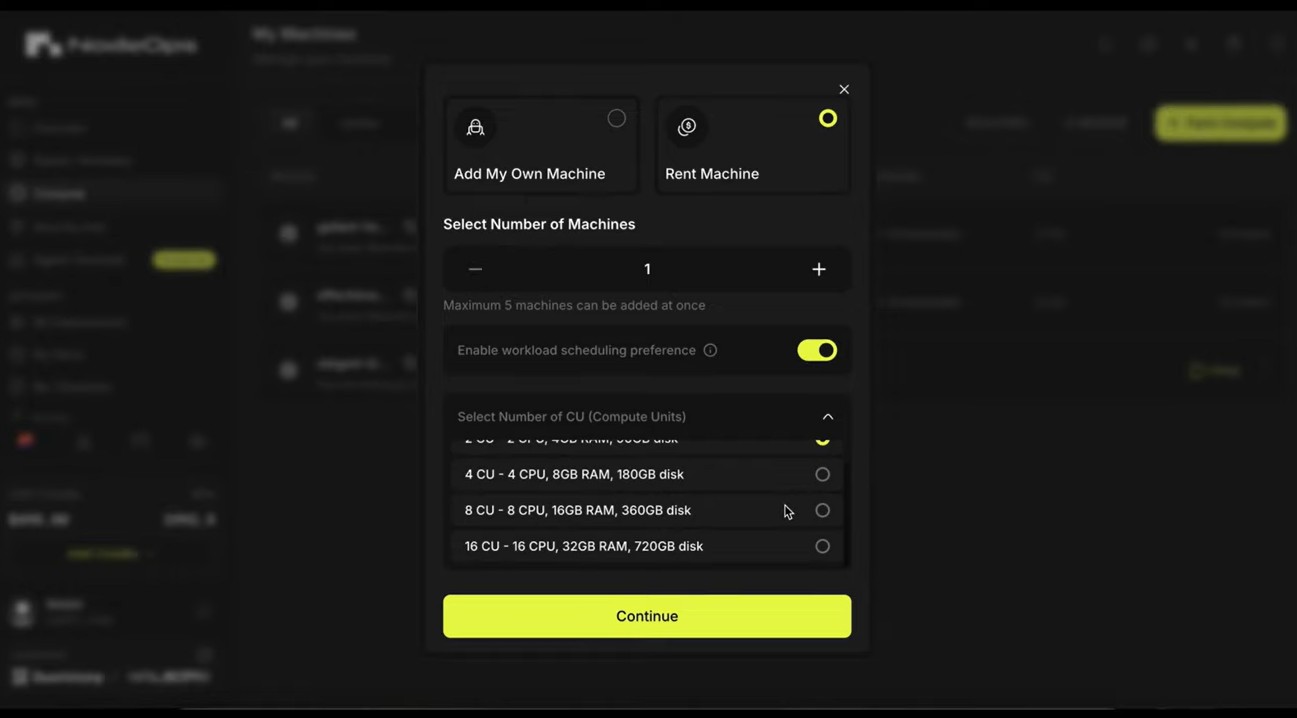 Renting computing power through NodeOps (Source: NodeOps). For detailed instructions on how to use the platform, refer to this link.
Renting computing power through NodeOps (Source: NodeOps). For detailed instructions on how to use the platform, refer to this link.
NodeOps does more than simply facilitate resource sharing—it utilizes a performance-based reward structure to accurately measure and incentivize the contributions of computing power providers. Providers directly receive a portion (25%) of the fees paid by users and can earn additional incentives based on performance and stability metrics such as uptime, throughput, and SLA (Service Level Agreement) compliance. This approach clearly differentiates NodeOps from centralized cloud providers, highlighting its decentralized governance and unique economic design.
As of June 18, 2025, NodeOps Cloud is operating on its testnet and has successfully onboarded a total of 89,027 machines, contributed by 23,710 individual computing resource providers. Registered resources collectively comprise approximately 755 GB of memory, 219 CPU cores, and 13.7 TB of storage. Even in its testnet phase, NodeOps Cloud has accumulated a substantial volume of participants and computing resources, establishing a robust foundational infrastructure in preparation for mainnet deployment.
2-3. NodeOps Console: Significantly lowering the barriers to blockchain network participation
NodeOps Console is a no-code infrastructure management tool at the core of the NodeOps ecosystem, designed to simplify the otherwise complex process of blockchain node deployment into a single, user-friendly web interface. Traditional node deployment has typically involved configuring Linux environments, executing CLI-based commands, setting up server security measures, and performing manual upgrades—all tasks requiring significant technical knowledge. NodeOps Console abstracts away these complexities, allowing users to deploy and manage blockchain nodes effortlessly with just a few clicks. After logging into the Console, users simply select their desired blockchain network and node type (validator node, full node, or light node), choose deployment options, and launch their node immediately without any additional infrastructure configuration. Furthermore, the Console is equipped with built-in automation scripts and AI-driven optimization features that handle not just initial deployment, but also subsequent maintenance and upgrades.
One of NodeOps Console’s greatest strengths is its flexibility in catering to various types of users. Non-technical users can quickly deploy nodes through straightforward options, while developers and experienced infrastructure operators can use advanced templates to configure detailed resource allocation, set up replication strategies, and customize network parameters. By simultaneously offering simplicity and flexibility, NodeOps Console effectively serves as an inclusive Web3 infrastructure management tool suitable for both beginners and experts.
As of June 2025, more than 61,100 nodes have been deployed via NodeOps Console across 90 supported protocols. Monthly active users have reached approximately 70,700, clearly demonstrating rapid adoption and growth in real-world usage.
 A validator node can be deployed on Elixir simply by entering the validator name and the wallet address to receive rewards. (Source: NodeOps)
A validator node can be deployed on Elixir simply by entering the validator name and the wallet address to receive rewards. (Source: NodeOps)
2-4. Orchestrating the entire infrastructure ecosystem
Beyond NodeOps Console and Cloud, NodeOps provides an extensive suite of complementary products designed to enhance the utility, usability, and completeness of the broader decentralized infrastructure ecosystem. Representative products include the Agent Terminal for AI developers, Security Hub for infrastructure security, and the Staking Hubfor incentivized user participation.
The Agent Terminal is a cloud-based testing environment specifically tailored for AI agent development. It facilitates collaborative AI development within a sandboxed environment running atop NodeOps Cloud. Developers can execute code, train AI models, and debug entirely within a web-based interface. Equipped with real-time port sharing, collaborative team features, and VS Code extension integration, Agent Terminal is particularly well-suited for educational purposes, prototyping, and testing scenarios. Notably, it’s designed to integrate seamlessly with GPU resources provided by NodeOps Cloud, paving the way for future expansion into LLM-based workloads. Currently available in a free beta version, Agent Terminal will later transition to a subscription-based pricing model.
The Security Hub is an AI-driven security scanning tool integrated into the NodeOps Marketplace. It automatically scans code repositories and application runtime environments for vulnerabilities, delivering comprehensive reports and analysis. Unlike traditional security scanners optimized for centralized systems—which struggle to integrate effectively into decentralized container environments the Security Hub has been purpose-built specifically for the decentralized NodeOps Network architecture. Users can conduct thorough vulnerability analyses and scans with just a single click. The hub generates easy-to-understand AI-powered reports and detailed summaries, ensuring even users without extensive security expertise can interpret results clearly. With automated scanning capabilities and real-time alerts, Security Hub continuously protects applications and infrastructure. Consequently, developers and DevOps teams can maintain rapid deployment cycles while proactively identifying and mitigating risks across their codebases, containers, and infrastructure environments. In decentralized cloud scenarios, Security Hub serves as a crucial security layer.
The Staking Hub provides a reward-based participation mechanism offering users direct earning opportunities. While governance participation via staking $NODE tokens will be available once NodeOps reaches mainnet, NodeOps is currently conducting Stakedrop campaigns involving BEAM mainnet and HYPE testnet tokens. Through this hub, users who deposit specified tokens receive APR-based rewards along with additional incentives in the form of $NODE tokens. By structuring rewards in this manner, NodeOps empowers staking participants to contribute beyond merely providing liquidity, setting the stage for ecosystem growth and expansion into a multichain staking market through validator integrations across multiple blockchains.
Collectively, these products illustrate how NodeOps is extending beyond a purely Console and Cloud-focused infrastructure platform. Instead, it aims to build an integrated ecosystem encompassing development environments, infrastructure security, and incentivized participation. Each product line plays a critical role in establishing NodeOps as a practical, real-world DePIN platform poised for mainstream adoption.
3. Creating Value Through Real-World Usage
Within just one to two years of its launch, NodeOps has rapidly expanded its ecosystem and delivered some of the most impressive real-world usage outcomes in the DePIN space. Its greatest advantage lies in enabling anyone to deploy a node within two minutes via a simple one-click process at a cost of approximately $4 per month. Even without complex setup or ongoing maintenance, NodeOps ensures 99%+ uptime, making it an efficient infrastructure solution that allows users without technical expertise to effortlessly earn rewards.
This user friendly structure is clearly reflected in on-chain data. After applying Sybil filtering, NodeOps boasts over 700,000 verified users and more than 4.25 million registered wallets. Monthly active users exceed 70,000, with an average retention rate of about 50%. Additionally, the total assets under management (AUM) within the NodeOps Network currently amount to approximately $130 million.
These metrics clearly illustrate that NodeOps has transcended simple infrastructure participation to become a significant platform through which real-world assets are actively connected and managed.
From a revenue perspective, NodeOps has also achieved noteworthy success. As of June 2025, cumulative revenue has reached approximately $3.77 million, with Annual Recurring Revenue (ARR) recorded at $2.99 million all generated solely through subscription-based income, without relying on token-based revenues. Notably, in May 2025, NodeOps ranked 2nd globally in the DePIN sector by revenue, demonstrating that it has quickly cemented a strong market presence. However, whether NodeOps can maintain this level of genuine revenue after its Token Generation Event (TGE) remains to be seen.
Industry Preference for Permissioned Networks May Pose Scalability Challenges
To date, NodeOps has successfully deployed more than 60,000 nodes, clearly validating its usability and scalability. These deployments include a variety of node types ranging from validator nodes to full and light nodes across major blockchain ecosystems like Bitcoin, Ethereum, Polkadot, and Cosmos. This wide deployment demonstrates how NodeOps’ template-based automation and extensive protocol compatibility deliver tangible benefits to real world users.
Nevertheless, the blockchain industry's increasing preference for permissioned network environments could potentially limit NodeOps’ scalability. Recent trends indicate that many blockchain networks prioritize performance and user experience over decentralization. Networks such as Inisia, Hyperliquid, and Kaia have intentionally adopted validator structures that restrict the number of validators to enhance performance, security, and consensus efficiency. If blockchain network design continues to favor limited validator sets, NodeOps may face challenges fully leveraging its capacity for large-scale node deployments.
Despite this potential obstacle, the broader industry shift toward decentralization is not a matter of if, but when. While blockchain networks differ in their pace toward fully permissionless environments, such a transition is ultimately inevitable. When this shift does accelerate, NodeOps will certainly be well-positioned to scale even further.
4. $NODE Tokenomics: Incentive Engine and Currency for the Ecosystem
To ensure the sustainability and organic growth of its decentralized infrastructure network, NodeOps has developed an incentive structure centered around the $NODE token. More than a simple utility token, $NODE serves as a crucial mechanism to align incentives among compute providers, network validators, and general users. It also plays an essential role in securing network operations and facilitating governance.
Firstly, the $NODE token acts as a participation requirement for network providers. Compute providers must stake 2,000 NODE per machine, with an additional stake of 200 NODE per compute unit (CU). This staking structure introduces minimum economic commitments designed to prevent opportunistic, short-term profit-seeking and to encourage stable infrastructure supply. Additionally, $NODE will eventually serve as a payment method for services provided via the NodeOps Console. Currently, stablecoins such as USDC and USDT, as well as credit cards, are accepted. However, NodeOps plans to create a fully circular economy using its native token.
Beyond utility, $NODE serves a vital role in incentivizing ecosystem participants. 25% of subscription fees paid by users are directly distributed to compute providers. An additional 15% of the total $NODE token supply is set aside as provider incentives. This incentive pool is allocated according to various performance metrics, such as uptime and workload efficiency, functioning as a critical lever for maintaining network stability and service quality. Furthermore, $NODE tokens are also used to reward Restaking Operators, who participate in off-chain validation tasks via restaking protocols like EigenLayer, Babylon, and Solayer.
NodeOps' tokenomics are designed to support a community driven expansion of the ecosystem. Of the total initial supply (678,837,730 $NODE), a significant 47.5% is allocated to community growth and participation incentives reflecting a clear strategy to empower early contributors and ecosystem participants as key stakeholders in the network’s long term success.
Specifically, when combining the Community & Ecosystem Growth allocation (30%) and the Airdrop allocation (15.5%), nearly half of the entire token supply is directed to external participants. This distribution strategy prioritizes sustained community engagement and network effects over short term token circulation. Additionally, the Protocol Incentives pool (15%) is dedicated to rewarding infrastructure operators such as node providers, verifiers, and orchestrators reinforcing a model that emphasizes tangible contributions to network performance and reliability.
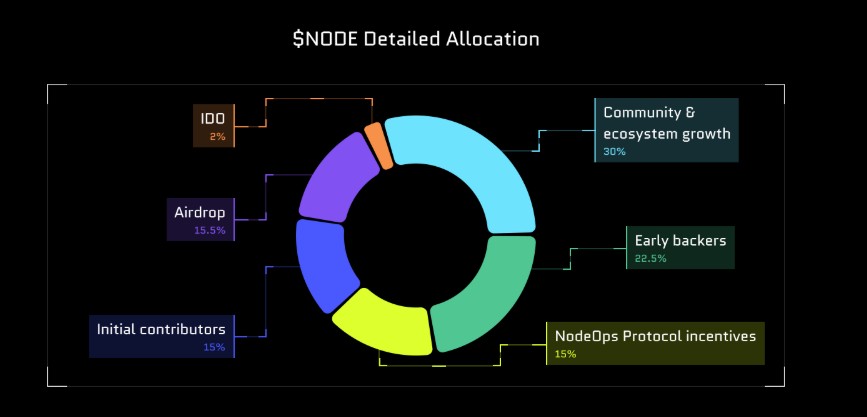
Addressing Token Inflation: NodeOps’ Proposed Solution
Nevertheless, NodeOps' tokenomics model still faces significant challenges particularly in managing inflation. Most DePIN projects adopt inflationary models, continuously issuing tokens to incentivize providers. Although initially beneficial for attracting infrastructure providers, sustained token issuance without commensurate demand eventually erodes token value and leads to participant attrition.
As illustrated in the chart below, major DePIN projects have witnessed a token price decline of 60–80% over the past year. In stark contrast, tokens like Hyperliquid (HYPE) and TRON (TRX) have surged 300–500% within the same period. This divergence starkly underscores how critical genuine token utility is for maintaining sustainable price performance. For instance, Hyperliquid, an on-chain derivatives exchange, leverages fast execution speeds and intuitive UX to drive high trading volumes, with its HYPE token clearly utilized for transaction fees and network costs. TRON has similarly positioned itself as an optimal stablecoin transfer network, where TRX serves as the payment token for USDT transaction fees, establishing tangible demand and real-world token value.
NodeOps recognizes the limitations of traditional tokenomics models and has introduced a revenue-backed dynamic issuance system. Rather than relying on fixed reward curves or marketing driven inflation, $NODE issuance is dynamically adjusted based on the actual revenue generated by the protocol.
At the core of this model is the Burn-and-Mint Equilibrium (BME) mechanism. Users burn $NODE tokens to access services, receiving non-transferable credits in return. Only a portion of the burned tokens is reissued, according to a burn/mint ratio that is governed and adjusted on an epoch basis. If no revenue is generated, no new tokens are minted ensuring that all inflation is strictly tied to real economic activity. This stepwise adjustment is designed to incentivize early participation during growth phases, while preserving scarcity and sustainability over time.
NodeOps’ incentive structure goes beyond simple reward modulation it functions as an automatic balancing mechanism that aligns supply with demand in real time. By preventing excess supply over actual usage, the system presents a compelling alternative to the inflationary risks faced by many DePIN projects. How flexibly NodeOps can operate this model, and how effectively it adapts to changes in demand and market conditions, will serve as a critical benchmark for the viability of sustainable incentive design across the DePIN ecosystem.
5. Closing Remarks – NodeOps Is Bringing DePIN to the Masses
DePIN is one of the most closely watched sectors within the crypto market today. However, it continues to face considerable challenges, notably high technical barriers and limited accessibility for everyday users. While numerous projects have entered the scene, few genuinely offer an accessible, “for everyone” user experience. Amidst this backdrop, NodeOps emerges as one of the most realistic efforts toward mainstreaming DePIN, placing user experience at the core of its design and execution.
NodeOps Console and NodeOps Cloud exemplify this vision. With the Console, users can easily deploy and manage blockchain nodes through just a few clicks, without requiring specialized technical knowledge. Simultaneously, the Cloud enables virtually anyone to connect their personal server resources and effortlessly participate as infrastructure providers. This seamless user experience has led to tangible outcomes tens of thousands of nodes deployed and a comparable number of compute providers onboarded. These metrics clearly demonstrate that NodeOps has succeeded in bringing DePIN infrastructure to a genuinely operational scale.
However, NodeOps still faces hurdles. The prevailing industry trend, which favors permissioned architectures prioritizing performance over decentralization, could constrain NodeOps’ capacity to fully leverage its substantial node deployment capabilities. Even so, it remains clear that the ultimate trajectory of blockchain technology is toward decentralization. As blockchain networks mature and increasingly open up to broader participation, NodeOps’ low-barrier infrastructure will undoubtedly become even more critical in facilitating that transition.
NodeOps represents more than just another DePIN project it is a tangible, real-world demonstration of decentralized infrastructure functioning as an accessible, mainstream system. Whether NodeOps will ultimately drive mass adoption of DePIN remains to be seen, but it unquestionably warrants close attention going forward.

